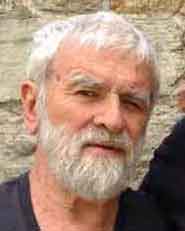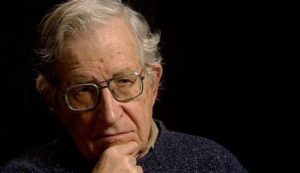Below is part of Chomsky’s reaction to the film:
Noam Chomsky interviewed by various activists. Excerpted from Understanding Power, The New Press, 2002
. . .
CHOMSKY: It is, it’s completely missing the point. It’s simply not factually accurate, for one thing — because like I say, the real work is being done by people who are not known, that’s always been true in every popular movement in history. The people who are known are riding the crest of some wave. Now, you can ride the crest of the wave and try to use it to get power, which is the standard thing, or you can ride the crest of the wave because you’re helping people that way, which is another thing. But the point is, it’s the wave that matters — and that’s what people ought to understand. I don’t know how you get that across in a film.
Actually, come to think of it, there are some films that have done it. I mean, I don’t see a lot of visual stuff, so I’m not the best commentator, but I thought Salt of the Earth really did it. It was a long time ago, but at the time I thought that it was one of the really great movies — and of course it was killed, I think it was almost never shown.
WOMAN: Which one was that?
CHOMSKY: Salt of the Earth. It came out at the same time as On the Waterfront, which is a rotten movie. And On the Waterfront became a huge hit — because it was anti-union. See, On the Waterfront was part of a big campaign to destroy unions while pretending to be for, you know, Joe Sixpack. So On the Waterfront is about this Marlon Brando or somebody who stands up for the poor working man against the corrupt union boss. Okay, things like that exist, but that’s not unions — I mean, sure, there are plenty of union bosses who are crooked, but nowhere near as many as C.E.O.s who are crooked, or what have you. But since On the Waterfront combined that anti-union message with “standing up for the poor working man,” it became a huge hit. On the other hand, Salt of the Earth, which was an authentic and I thought very well-done story about a strike and the people involved in it, that was just flat killed, I don’t even think it was shown anywhere. I mean, you could see it at an art theater, I guess, but that was about it. I don’t know what those of you who know something about film would think of it, but I thought it was a really outstanding film.
Below is the film: Salt of the Earth (1954)
Commentaries on Salt of the Earth, see:
Herbert J. Biberman, Salt of the Earth; The Story of a Film (Boston: Beacon Press, 1965) [includes the screenplay by Michael Wilson];
James J. Lorence, The Suppression of Salt of the Earth: How Hollywood, Big Labor, and Politicians Blacklisted a Movie in Cold War America (Albuquerque: University of New Mexico Press, 1999).

